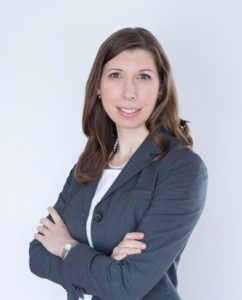“Can We Be Everywhere, All the Time with Autonomous Satellites?”
3 Forbes Rd
Lexington, MA 02421
USA
IEEE BOSTON Interdisciplinary Seminars Series: co-sponsored by the Geoscience and Remote Sensing Society and the Aerospace and Electronic Systems Society
Speaker: Prof. Kerri Cahoy, MIT Aeronautics and Astronautics
What if you could view and connect with any place on Earth at any time you wanted without any restrictions? The small satellite revolution is making rapid global access a reality. It all started with the idea that you could put at tiny “stowaway” CubeSat in a spring-loaded box on a rocket, keeping it safely contained on an otherwise unaffordable ride to space. The resulting paradigm shift in the satellite industry has slashed the cost of access to space over the past decade, enabled rapid innovation and miniaturization of space technology, and upended an industry once legendary for its reliance on heritage, risk-aversion, and glacial pace of technology development. Constellations of hundreds of small satellites are soaring above us, replenished regularly with even more advanced units. We are quickly working to teach them to communicate with each other, self-organize, and efficiently manage their limited onboard resources. Trailblazing efforts to automate spacecraft operations and data recovery, network with crosslinks between spacecraft, move decision-making processes from humans on the ground to intelligent onboard algorithms, and reduce the cost of ground stations are catapulting us toward real-time global access. What if you could monitor crop growth and harvest times, optimize fieldwork transportation and logistics, analyze and adapt in real time to weather and natural disaster events, gather and make decisions on embedded sensor data over a wide region, keep tabs on natural resources, and monitor every spot on Earth from relatively close range multiple times a day? Imagine the scientific benefits, as well as risks, of having the power to inexpensively be everywhere, all the time.
Dr. Kerri Cahoy is an associate professor of Aeronautics and Astronautics at MIT and leads the MIT Space Telecommunications, Astronomy, and Radiation (STAR) Lab. She currently works on nanosatellite laser communication systems and weather sensors. She also works on space telescope missions to directly image exoplanets, and is developing a 6U CubeSat to test MEMS deformable mirror technology for high contrast coronagraph wavefront control systems. Her group also works on understanding the relationship between space weather and spacecraft anomalies, and does radiation testing of commercial CubeSat components. Previously, Dr. Cahoy worked on spacecraft radio systems for space weather and planetary atmospheric sensing, nanosatellites. She worked on the MIT Gravity Recovery and Interior Laboratory lunar mission team at NASA Goddard Space Flight Center. She has used spacecraft radio systems to study the atmospheres and ionospheres of solar system planets.
Meeting Location: MIT Lincoln Laboratory, 3 Forbes Rd, Lexington, MA 02421, USA

